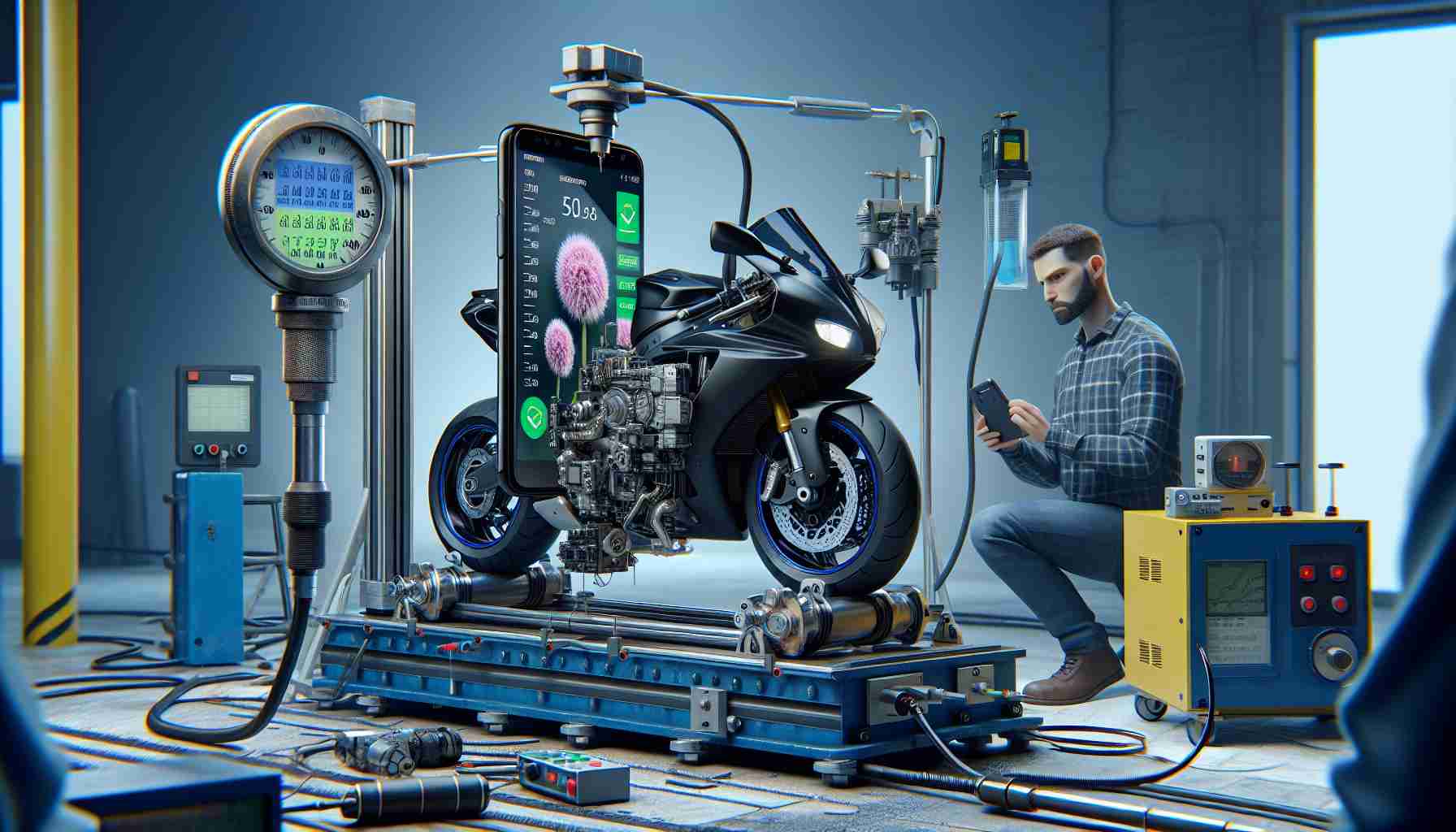Creating robust technology that can withstand the dynamic environment of motorcycle transport is a substantial feat. The constant vibrations emitted by motorcycles present a unique challenge: how to ensure smartphones endure this rigorous movement over time. Hence, tech gurus have been pushing the boundaries to enhance the durability of our everyday gadgets.
In Apple’s covert iPhone testing labs, they’ve crafted a novel approach to simulate motorcycle vibrations, thereby putting their devices through comprehensive endurance assessments. Their methodology includes utilizing a shaking robot that mimics engine rigors to gauge product longevity for users who frequently hit the road on two wheels. Considering the vast number of global consumers that depend on motorcycles for daily transport and errands, such a feature certainly broadens the horizon for the marketability and reliability of smartphones.
Tech Youtuber Marques Brownlee recently had a chance to peek behind the curtain of these secretive labs. There, he discovered a plethora of tests dedicated to ensuring the iPhones withstand everything from drops to water immersion, securing their IP68 rating. Yet, it’s the sophisticated shake test that caught significant attention. This process not only examines general wear and tear but it’s reputedly calibrated to replicate the unique resonance of various motorcycle engines.
Apple’s ingenuity doesn’t merely cater to the futuristic electric motorcycles, which still emit notable levels of vibration, but extends to the arrays of motorbikes humming through the streets of Europe, Asia, and beyond. This attention to detail possibly explains why the iPhone 13 Pro has remained unaffected by even the most intrepid motorbiking adventures. While Apple remains tight-lipped about which specific motorbike engine vibrations are used for their tests, their decision to invest in such rigorous durability testing underscores their commitment to serving customers from all walks of life, no matter where their journey takes them.
Motorcycle Vibrations and Smartphone Durability
Smartphones, like the iPhone, are subjected to a myriad of environmental stressors in daily use, with motorcycle vibrations being a unique and extreme example. Prolonged exposure to vibrations can lead to hardware issues such as loose components or even disrupt optical image stabilization systems used in smartphone cameras. To address these problems, companies develop the durability of smartphones so they can withstand the physical stress posed by such transportation methods.
Endurance Assessments in Apple’s Labs
Apple’s rigorous assessment in their secretive labs can be regarded as a testament to their commitment to product quality and consumer satisfaction. The tests conducted may include replicating a range of vibrational frequencies that motorcycles emit, which can affect various components of a phone, from the internal circuitry to exterior finishes.
The Implications of Marques Brownlee’s Discovery
Marques Brownlee’s insights into Apple’s testing labs reveal the extent to which companies are willing to go to ensure their products can endure real-world conditions. It showcases Apple’s investment not just in design and features, but in the longevity of their products. This dedication might significantly influence consumer trust and loyalty.
Challenges and Controversies
A key challenge associated with such durability testing is keeping up with the ever-evolving designs and technologies of motorcycles, which could introduce new vibrational patterns. Companies must continuously update their simulation methodologies to account for these changes.
There may also be controversies around the environmental impact of producing such durable devices. The manufacturing processes need to be sustainable, and end-of-life disposal should be responsibly managed to minimize e-waste.
Advantages and Disadvantages
The primary advantage of this rigorous testing approach is the increased reliability of smartphones, which are less prone to failure from everyday use and extreme conditions such as those experienced on a motorcycle. This may translate to fewer repairs or replacements needed over the device’s life, ultimately benefiting the consumer and enhancing the brand’s reputation.
However, one disadvantage could be the potential increase in production costs associated with such comprehensive testing, which could affect the final cost of the device for consumers. Additionally, there’s a risk of overengineering, whereby the focus on durability could compromise other aspects of the phone, such as design aesthetics or cost-effectiveness.
Conclusion
Ensuring the endurance of smartphones against the rigors of motorcycle vibrations is a clear indication of Apple’s foresight into the diverse usage scenarios of their products. It underlines their intent to engineer devices that not only stand the test of time but also meet the varied demands of consumers worldwide.
For more information on the subject matter, you can visit Apple’s main domain at Apple. Always remember to verify the reliability and accuracy of the URL before sharing or clicking on any links.
